Friday 2 August 2013
Coldplay turning down money
http://en.wikipedia.org/wiki/Coldplay#Activism_and_commercial_endorsements
Wednesday 12 June 2013
Information on celebrity endorsements
Infographic on Young peoples opinions of celebrity endorsements

Controversial celebrity endorsements:
http://finance.yahoo.com/news/7-controversial-celebrity-endorsements-105627600.html
Weird Endorsements:
http://www.funnyordie.com/slideshows/f4cefa4a70/the-weirdest-celebrity-endorsements#slide2
Kim K Toilet Paper?
Higher celebrity credibility will be positively correlated with the attitude toward the advertisement.
Higher credibility of the organization will be positively correlated with the attitude toward the advertisement.
Higher perceived fit of the celebrity with the social cause will be positively correlated with the attitude toward the advertisement.
Higher attribution of pure motives to the celebrity will be positively correlated with the attitude toward the advertisement.
Higher perceived fit of the celebrity with the social cause will be positively correlated with attribution of pure motives to the celebrity.
Higher attitude toward the celebrity will be positively correlated with the perceived fit of the celebrity with the social cause.
Higher acceptance of the practice of celebrity endorsements in social causes will be positively correlated with the perceived fit of the celebrity with the social cause.
Higher attitude toward the advertisement will be positively correlated with behavioral intentions.
Higher credibility of the organization will be positively correlated with behavior intentions.
- See more at: http://www.douglaserice.com/celebrities-non-profits/#sthash.t7x0QPz3.dpuf

Controversial celebrity endorsements:
http://finance.yahoo.com/news/7-controversial-celebrity-endorsements-105627600.html
Weird Endorsements:
http://www.funnyordie.com/slideshows/f4cefa4a70/the-weirdest-celebrity-endorsements#slide2
Kim K Toilet Paper?
Silly Endorsements:
More Disasters:
"The line has blurred between a celebrity who is known for entertainment talent and one for whom his or her primary accomplishments are business ventures."
Another article:
Good Tone of Voice in this article:
Good Summary:
"The basic idea of the endorsement is pretty simple. People like celebrities. If those celebrities say that they like a product, people will like that product, too."
"So, what accounts for this celebrity effect? Endorsements could be a signal of quality -- but the modern consumer is sophisticated. They know money's changing hands. At a deeper level, we seem to crave connection to the famous and the powerful."
Experiment: 'A total of 329 Spanish people over the age of 18 were shown the two advertisements, with 162 being shown the UNICEF-Pau Gasol combination and 169 being shown the UNICEF-Penelope Cruz combination.'
These Hypothesis were supported with the experiment data:
Potential references:
Celebrity Sells by Hamish Pringle http://www.amazon.co.uk/dp/0470868503
Celebrity Endorsements: Theoretical Explanations of Meaning Transfer - and Schema-based-Models - Recent Developments
Will Work for Shoes - Susan Ashbrook
Monday 20 May 2013
Wednesday 15 May 2013
OUGD 501 Module Evaluation
What skills have you developed through this module and how effectively do you think you have applied them?
This module's main skills that I have been able to develop throughout have been research which I have done to a more extensive and thorough level than I have before, using both the library and the internet together to create a solid body of research. The practice aspect of this module has improved my editorial skills as well as copywriting and concept skills.
What approaches to/ methods of design production have you developed and how have they informed your design development process?
With this project, considering that the practice is supposed to reflect the context I put more effort into making this happen, printing onto different stocks rather than relying of laser paper. Also experimenting with scanning and hand drawing aspects to contribute toward the 'praxis' of the project.
What strengths can you identify in your work and how have/will you capitalise on these?
I think that the tone of voice and general concept of my final publication was successful. In the future I will continue to develop concepts until the tone of voice and audience are clear as this will define wether the brief will be clear and consistent or not.
What weaknesses can you identify in your work and how will you address these in the future?
In the future I will research for a longer period of time so that my arguments are better informed and draw from a range of good sources.
Identify five things that you will do differently next time and what do you expect to gain from doing these?
Conduct more primary research so that the project is more unique and contains more 'new' material. Experiment more with stock and see what would be the best for the job. Define the sections of the publication more so that it runs more fluently. Photograph the finished products in context. Tie the content of the publication in tighter with lecture themes, pull information from a wider range of sources
5= excellent
4=very good
3=good
2=average
1=poor
Attendance: 5
Punctuality: 5
Motivation: 4
Commitment: 4
Quantity of work produced: 4
Quality of work produced: 4
Contribution to the group: 3
Friday 10 May 2013
Proverbs
The general concept for the bar is based on proverbs, as these are little nuggets of advice that have been passed person to person for years and years which reinforces the social aspect of the bar, they also represent sophisticated thinking and thought provoking ideas.
To design the surrounding material around the establishment (wayfinding, menu's, forum, promotion, etc) I am going to build a bank of proverbs that could be used on some of these products.
To design the surrounding material around the establishment (wayfinding, menu's, forum, promotion, etc) I am going to build a bank of proverbs that could be used on some of these products.
Cheerful company shortens the journey.
Even a thousand-mile journey begins with the first step.
He who is outside the door has already a good part of his journey behind him.
Eating and drinking Shouldn't keep us from thinking.
After the rain the grass will grow, after wine; conversation.
Tuesday 7 May 2013
Bar Environment
As I am branding a fictional bar I wanted to find existing bars that share a similar personality to the one that I am branding, here are a few that I think give off a personable and social feel.
I may use some of these images in the project giving reference to their original sources
I may use some of these images in the project giving reference to their original sources
Pocket, Syndey http://www.pocketsydney.com.au/
Chesterfield couches work well in creating a personal and comfortable environment that is reminiscent of an earlier age
Arlington Club, http://arlingtonclubny.com/#gallery5
L'ascensor Cocktail Bar http://www.facebook.com/pages/Lascensor-Cocktail-Bar/135768056491386
Thursday 2 May 2013
Playing Card Design
As reference for designing a playing card poster for the exhibition space I have compiled a few different playing cards that retain recognisability and familiarity.
These two kings have the strongest and most memorable look out of all of these kings,
I will base the poster illustration on this aesthetic style
I will base the poster illustration on this aesthetic style
Thursday 25 April 2013
Relevant Sources
These are sources I have found that inform about the danger of design contests, working for free, devaluing your field, clients views of designers and putting effort into your craft.
http://buildinternet.com/2009/01/the-real-problems-with-design-contests/
http://justcreative.com/2008/05/22/why-logo-design-does-not-cost-5-dollars/
http://logodesignerblog.com/bad-ugly-worst-logo-designs/
http://yourlogomakesmebarf.com/
http://www.davidairey.com/whats-your-logo-worth/
http://craplogo.me/
Plagiarism
http://www.thelogofactory.com/logo-design-articles/logo-design-contests/
Design Comps
http://www.davidairey.com/logo-design-contests-bad-for-business/
http://justcreative.com/2009/08/12/the-pros-and-cons-of-spec-work/
http://www.davidairey.com/the-disconcertion-of-spec/
http://blog.kiwicreative.net/2011/02/23/im-mad-as-hell-spec-you/
http://www.nospec.com/
http://buildinternet.com/2009/01/the-real-problems-with-design-contests/
Why to not use GoDaddy
http://www.forbes.com/sites/kellyclay/2012/09/10/5-reasons-you-should-leave-godaddy-and-how/
Books
Work For Money, Design For Love, David Airey
Pricing and Ethical Guidelines, Graphic Artists Guild
All of these sources reinforce the fact that you need to know what you are doing, you need to be in control of telling the client what works and why it works as designers we need to be more confident and educated about the work we produce and can't simple base an argument on style and aesthetics.
An interesting can of worms that I cam across was 'speculative work' which is pretty much all design competitions in which the client owns the rights to hundreds of designs and doesn't even commit to paying for any of them, and even the winner only gets something like $50.
This needs to be a big topic in my publication, as I, and the majority of the class, have all entered similar competitions without much thought of how backwards it is and wouldn't every happen in any other profession, it is almost accepting that graphic design is just a hobby and we are willing to work for nothing, which is the exact reason I don't do fine art.
Potential endorsements for my publication could be No!Spec.com, a website who are against all design competitions and designers not receiving a fare wage for a service. Other relevant applications could be for The Graphic Artists Guild or The Design Council.
To add some humour to the publication I will take some inspiration from ClientsFromHell, this is a bank of funny stories in which the client think they know best whilst at the same time proving they know nothing:
http://buildinternet.com/2009/01/the-real-problems-with-design-contests/
http://justcreative.com/2008/05/22/why-logo-design-does-not-cost-5-dollars/
http://logodesignerblog.com/bad-ugly-worst-logo-designs/
http://yourlogomakesmebarf.com/
http://www.davidairey.com/whats-your-logo-worth/
http://craplogo.me/
Plagiarism
http://www.thelogofactory.com/logo-design-articles/logo-design-contests/
Design Comps
http://www.davidairey.com/logo-design-contests-bad-for-business/
http://justcreative.com/2009/08/12/the-pros-and-cons-of-spec-work/
http://www.davidairey.com/the-disconcertion-of-spec/
http://blog.kiwicreative.net/2011/02/23/im-mad-as-hell-spec-you/
http://www.nospec.com/
http://buildinternet.com/2009/01/the-real-problems-with-design-contests/
Why to not use GoDaddy
http://www.forbes.com/sites/kellyclay/2012/09/10/5-reasons-you-should-leave-godaddy-and-how/
Books
Work For Money, Design For Love, David Airey
Pricing and Ethical Guidelines, Graphic Artists Guild
All of these sources reinforce the fact that you need to know what you are doing, you need to be in control of telling the client what works and why it works as designers we need to be more confident and educated about the work we produce and can't simple base an argument on style and aesthetics.
An interesting can of worms that I cam across was 'speculative work' which is pretty much all design competitions in which the client owns the rights to hundreds of designs and doesn't even commit to paying for any of them, and even the winner only gets something like $50.
This needs to be a big topic in my publication, as I, and the majority of the class, have all entered similar competitions without much thought of how backwards it is and wouldn't every happen in any other profession, it is almost accepting that graphic design is just a hobby and we are willing to work for nothing, which is the exact reason I don't do fine art.
I think that myself and others need to be reminded of the importance of a logo. Logos get a lot of bad press because the public see them as a squiggle with some font being billed at, sometimes, millions of pounds. It is easy to think of a logo job as a quick, no research required job, when in really this is the face of a company and should be the most considered aspect.
- A logo is the very first impression people get of your company.
- A logo needs longevity.
- A logo needs to be original.
- A logo should look professional.
- A logo should reflect the time and thought gone in to designing it.
- A logo is the starting point of your whole corporate image.
“first impressions often leave lasting ones”
Potential endorsements for my publication could be No!Spec.com, a website who are against all design competitions and designers not receiving a fare wage for a service. Other relevant applications could be for The Graphic Artists Guild or The Design Council.
To add some humour to the publication I will take some inspiration from ClientsFromHell, this is a bank of funny stories in which the client think they know best whilst at the same time proving they know nothing:
""They are only for my website, so I don’t need the full quality files. If I only take like a 4.5Mpx version of each photo, can I pay you a quarter of the price?"
"After being hired to design a promotional flyer…
ME: What size will you want the flyer?
CLIENT: It will only be used online. The same size as the flyer attached should work.
Attached is a web-friendly 72dpi flyer.
After I complete the project via the agreed upon specs…
CLIENT: We are being told that if this flyer goes to a printer, it’ll look like shit. Care to explain?"
"You have done something wrong. I cannot see your photos. Please send them in a normally used format like Microsoft."
— Response to a zipped file filled with .jpgs
Gary offered some very solid, specific advice that lends itself to the points raised in the publication very well. I will use the information as large spreads that re-iterate the points made on the surrounding pages.
For some primary research I contacted a variety of design studios but only had response from an experienced freelance designer who I did a small placement with a few years ago.
Gary offered some very solid, specific advice that lends itself to the points raised in the publication very well. I will use the information as large spreads that re-iterate the points made on the surrounding pages.
Monday 22 April 2013
CoP Questions to Ask
To develop further content for my publication I am going to write focussed questions that I can ask designers and companies that is specific to the topic of the publication.
What can a designer fo that can never be replicated by a program?
How would you persuade a client to use your services rather than settling for what is available online?
How can designers stay on top of better value deals (in the eyes of the client) and still make money?
Hello, I am currently writing a publication about the relevance of the designer and why smaller clients would ever need them with the breadth of free templates/ design tools available online. I was just wondering if you could give me a short response to these questions as a web design company.
What can designers do that can never be replicated by a program?
What can Creode bring to a website that can't be made using free web templates available at Vistaprint/ GoDaddy erc?
How can designers stay on top of better value deals (in the eyes of the client) and still make money?
Thanks a lot for your time!
Chris
I have sent this email to Build, Studio Mik Mik and G1 Creative aswell as Creode to get a wider variety of answers from different sizes of company.
What can a designer fo that can never be replicated by a program?
How would you persuade a client to use your services rather than settling for what is available online?
How can designers stay on top of better value deals (in the eyes of the client) and still make money?
Hello, I am currently writing a publication about the relevance of the designer and why smaller clients would ever need them with the breadth of free templates/ design tools available online. I was just wondering if you could give me a short response to these questions as a web design company.
What can designers do that can never be replicated by a program?
What can Creode bring to a website that can't be made using free web templates available at Vistaprint/ GoDaddy erc?
How can designers stay on top of better value deals (in the eyes of the client) and still make money?
Thanks a lot for your time!
Chris
I have sent this email to Build, Studio Mik Mik and G1 Creative aswell as Creode to get a wider variety of answers from different sizes of company.
Tuesday 16 April 2013
Post Crit
Following the presentation and crit on the progress of the Context of Practice Publication a few ideas were suggested and some more online tools that are relevant to the nature of my project.
Phoster
Phoster is an app that costs $1.99 to download, it allows users to choose from a large variety of templates and typefaces to create their own posters:
http://www.apartmenttherapy.com/3-simple-to-use-creative-design-apps-for-the-ipad-172704
This blog describes the purpose of the app as:
"Design has a steep learning curve. Not only are the tools often extremely complex (and expensive) the skills needed to create great looking design take years for a budding designer to develop. producing beautiful designs quickly and easily no matter what your level of skill and experience."
This is the essence of my publication, if clients can cut out the middle man, what is the job of the designer?
Anonymous Press
Another tool that can be used to quickly create 'trendy' zine publications is Anonymous Press. This allows you to do a quick image search and it automatically drags and drops images into a small publication that is in a similar style to the 'exposed content' fasion that is popular at the moment
Phoster
Phoster is an app that costs $1.99 to download, it allows users to choose from a large variety of templates and typefaces to create their own posters:
The designs aren't anything that will blow your mind but they will easily fulfil the needs of a smaller client that just wants to promote their business
http://www.apartmenttherapy.com/3-simple-to-use-creative-design-apps-for-the-ipad-172704
This blog describes the purpose of the app as:
"Design has a steep learning curve. Not only are the tools often extremely complex (and expensive) the skills needed to create great looking design take years for a budding designer to develop. producing beautiful designs quickly and easily no matter what your level of skill and experience."
This is the essence of my publication, if clients can cut out the middle man, what is the job of the designer?
Anonymous Press
Another tool that can be used to quickly create 'trendy' zine publications is Anonymous Press. This allows you to do a quick image search and it automatically drags and drops images into a small publication that is in a similar style to the 'exposed content' fasion that is popular at the moment
When the process of design can be summed up by a computer program, then I don't think that that process has much to do with design at all, I will explore this idea further in the publication to fully summarise what design is and why it is an essential element of a successful identity/ piece of visual communication
Sunday 14 April 2013
Thursday 28 March 2013
Forum and Interface Design - Good Is
For the interactive touch screen table elements of the bar I need to research into successful interface design and consider that it could be being used by drunk people, therefore must be user friendly.
For the forum aspect I need to look into what the restrictions are when designing forums and hopefully find some examples of forums that break the rules of a standard forum.
I think that this forum is relatively simple and easy to navigate but could be improved upon
The majority of forums have this kind of layout which is very text heavy and difficult to digest.
Incorporating nice images may help to make the experience more relaxing and interactive.
For the forum aspect I need to look into what the restrictions are when designing forums and hopefully find some examples of forums that break the rules of a standard forum.
I think that this forum is relatively simple and easy to navigate but could be improved upon
The majority of forums have this kind of layout which is very text heavy and difficult to digest.
Incorporating nice images may help to make the experience more relaxing and interactive.
If I could keep the rustic / traditional themes that the bar has and transfer it the UI design then I think that would be relevant and effective.
Monday 18 March 2013
CoP Publication: Format
The format of the publication should reflect the content in some way.
A few ideas that would be relevant to the content of my publication are:








A few ideas that would be relevant to the content of my publication are:
- Directly copy and existing layout and design, simply changing the content
- Don't use Creative Suite and only use Office and online facilities
- Follow stylistic fashions and current trends
- Design in a way that is inimitable- creative and experimental publication
- A series of publications that offer different perspectives on the topic- designers, operators of Vista Print etc, clients, businesses that use Vista Print for templates etc.
- A collection of the same publication in a series of different styles to show that style does/ doesn't affect content.
- Look into other things that imitate each other/ follow trends (nature, Lyre bird, mannequins?) design in style of this.
These are some formats and editorial based design that I find aesthetically pleasing and effective:

I could incorporate holes/ acetate in the pages to illustrate certain points I make:


Designing a range that work together and offer different ideas/ viewpoints could be effective

Incorporating tactile and interactive elements will make the publication stand out and easier to take in and engage with.



This poster captures the essence of the content of my publication:

CoP Publication direction
The question that I want to explore with my context of practice publication which carries on and links in to my essay content is: As designers, how much attention should we pay to style and trends, and what attributes of a designer can not be easily replicated? I will look into existing online programmes that generate 'design' and ask what is the difference between potential clients simply doing it themselves. The publication will be based around the ideals of Modernism and anti-decoration and trend.
Online facilities that mimic the job a designer:
This site allows users to generate basic signs and set type
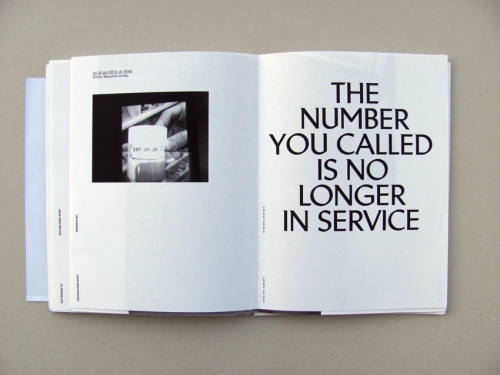
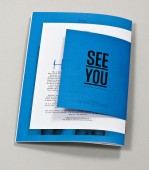
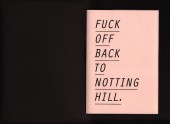
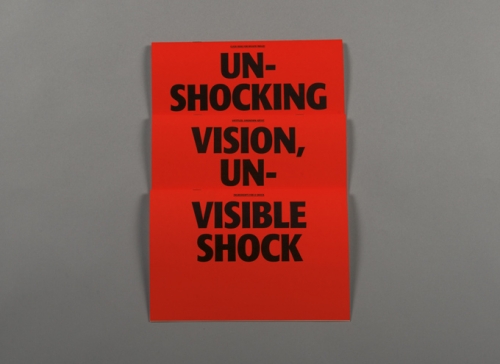
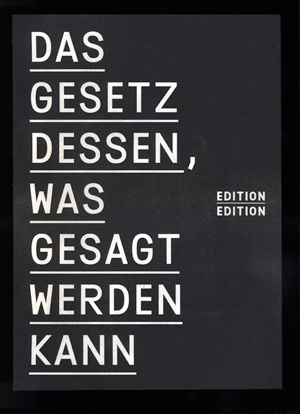
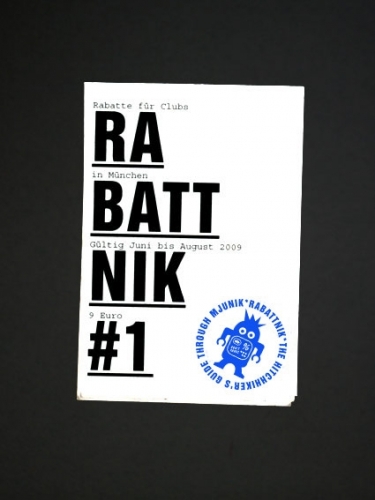
Online facilities that mimic the job a designer:
This site allows users to generate basic signs and set type
It offers a wide range of typefaces that goes beyond the standard set that comes with any design package
Although there are a lot of very dodgy and horrible typefaces...
There are a lot that are very similar to fonts that can be seen in 'trendy' design today
(Generated using the program)
in comparison to:

There are also much more garish possibilities that I'm sure will be popular for some reason:
What stops design being so imitable?
This online resource is hard to use and is very restricted in comparison to basic Word processing software which offers a lot more freedom for moving type and layout.
This site: http://www.trendlist.org/ documents all new trends emerging within Graphic Design focussing on popular aesthetics and styles and no information on content. What is stopping anybody having a look on here and simply imitating a design?





Trend list offers an even more useful poster style generator that allows trends to be copied with ease:
Even more daring design can be replicated easily:
It is almost difficult to go wrong with this generator and if something like this was printed off and held up whilst someone photographed it, it could quite easily get noticed and popular on inspiration sites etc.
Websites such as vista print and Moo offer loads of templates and stock images:
\
I'd say that Moo offers some really nice templates that look professional and if you weren't aware of Moo templates you could be tricked, easily, into thinking that it is custom work
Furthermore, there are many very cheap website builders that offer layout options and functionality that probably exceeds a lot of designers capabilities for half the price.
This is the deluxe package that is only £2.72 a month - this probably goes up after a few months but is still relatively cheap
The user can choose a template they like and are then in control of how they make it look with no need to complain to a designer that they don't like the typeface or colour. It seems like an easier and cheaper option than actually paying a designer and explaining what it is that you want.
This is the direction my publication is going to go, essentially asking "What makes design Un-imitable?"
I will email designers to ask their opinion, along with some businesses such as Vista Print and Moo to see how their answers differ.
Subscribe to:
Posts (Atom)























.jpg)





























